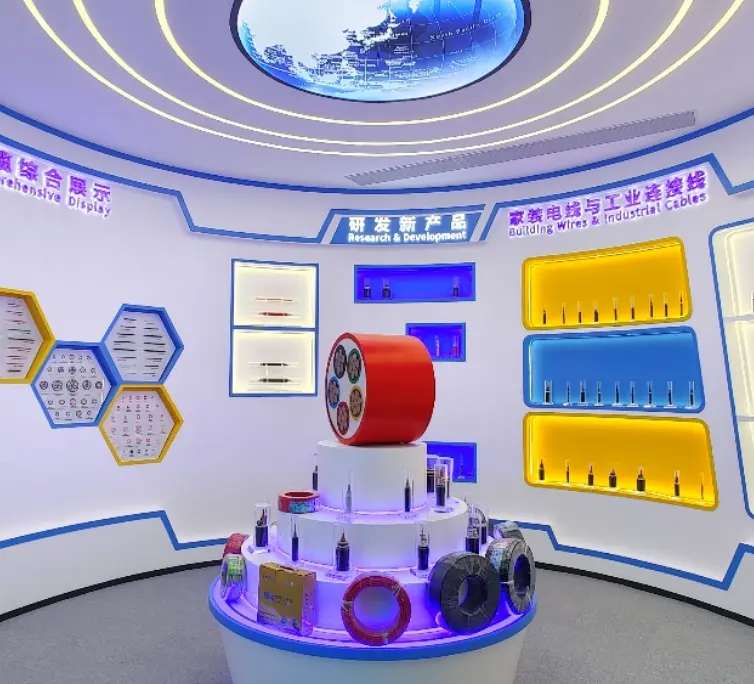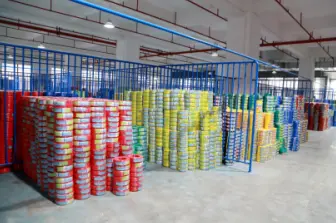Structure, Performance, and Applications of Flame-Resistant Cables
In modern urban and industrial buildings, flame-resistant cables play a crucial role as cables that can maintain safe operation for a certain period under flame burning conditions. This article will delve into the structure, performance, and application of flame-resistant cables.
Structure of Flame-Resistant Cable
The structure of flame-resistant cables is complex and precise, designed to ensure stability and safety in high-temperature environments. Generally speaking, flame-resistant cables mainly consist of the following parts:
Conductor: The conductor of flame-resistant cables typically uses multi-strand copper wire or high conductivity metal materials (such as copper). This structure not only guarantees good electrical performance but also provides excellent flexibility, allowing the cable to operate normally in various complex environments.
Insulation Layer: The insulation layer is a critical part of flame-resistant cables, made from high-temperature, non-combustible fire-resistant materials such as mica and ceramics. These materials have high heat resistance and electrical performance, maintaining the integrity of the cable in high-temperature environments and preventing current leakage and short circuits.
Isolation Layer: The isolation layer is mainly used to enhance the fire resistance of the cable, typically made from inorganic mineral materials. It effectively prevents the spread of flames, further protecting the internal structure of the cable from damage.
Outer Sheath: The outer sheath is the outermost layer of flame-resistant cables, usually made from low-smoke, non-toxic plastic materials such as polyvinyl chloride (PVC) or halogen-free, low-smoke flame-retardant polyolefin materials. This design not only improves the cable's corrosion resistance and electrical performance but also effectively reduces the toxic gases and smoke produced during a fire, minimizing the impact on people and the environment.
Some flame-resistant cables also use armored structures, wrapping a layer of steel wire or tape around the outside of the cable to enhance its mechanical strength and resistance to external damage. Armored cable structures are typically divided into six layers, including copper core conductor, mica tape-wrapped fire-resistant layer, cross-linked polyethylene insulation layer, lining layer, steel wire armor, and PVC sheath.
Performance of Flame-Resistant Cable
The performance of flame-resistant cables is mainly reflected in the following aspects:
Fire Resistance: Fire-resistant cables can maintain normal operating characteristics while burning in flames under specific test conditions. Generally, B-class flame-resistant cables can withstand burning in flames of 750℃ to 800℃ for at least 90 minutes without breakdown at rated voltage, while A-class flame-resistant cables can maintain the same fire resistance time at even higher temperatures (950℃ to 1000℃).
Electrical Performance: Fire-resistant cables have good electrical performance, maintaining stable conductivity in high-temperature environments, ensuring the continuity and reliability of power transmission.
Mechanical Performance: Fire-resistant cables have high mechanical strength, capable of withstanding certain external forces without being easily damaged, particularly in armored cables.
Environmental Performance: The use of low-smoke, non-toxic materials for the outer sheath reduces the smoke and toxic gases produced during a fire, promoting safe evacuation and rescue efforts.
Applications of Flame-Resistant Cable
Fire-resistant cables are widely used in various scenarios requiring high fire safety, mainly including:
Fire Protection Systems: For example, power supply and control lines for fire pumps, sprinkler pumps, fire elevators; power supply control lines for fire shutter doors, electric fire doors, smoke control system fans, smoke valves, and fire valves.
Emergency Evacuation Systems: Such as emergency lighting lines, guiding lights, and emergency power outlets in high-rise buildings, ensuring necessary lighting and power support for evacuation during a fire.
Important Facilities: Power supply and control lines for places like airports, subways, large power stations, and important industrial and mining enterprises, ensuring these facilities can maintain basic operations during a fire and reduce losses.
Monitoring Systems: Such as manual alarm lines for fire alarm systems, fire broadcast and telephone lines, and security CCTV lines, ensuring the normal operation of fire alarm and monitoring systems.
Latest News & Blog
 English
English  français
français  Deutsch
Deutsch  العربية
العربية  tiếng việt
tiếng việt  ไทย
ไทย  čeština
čeština  Indonesia
Indonesia  Eesti
Eesti  български
български  slovenčina
slovenčina 



